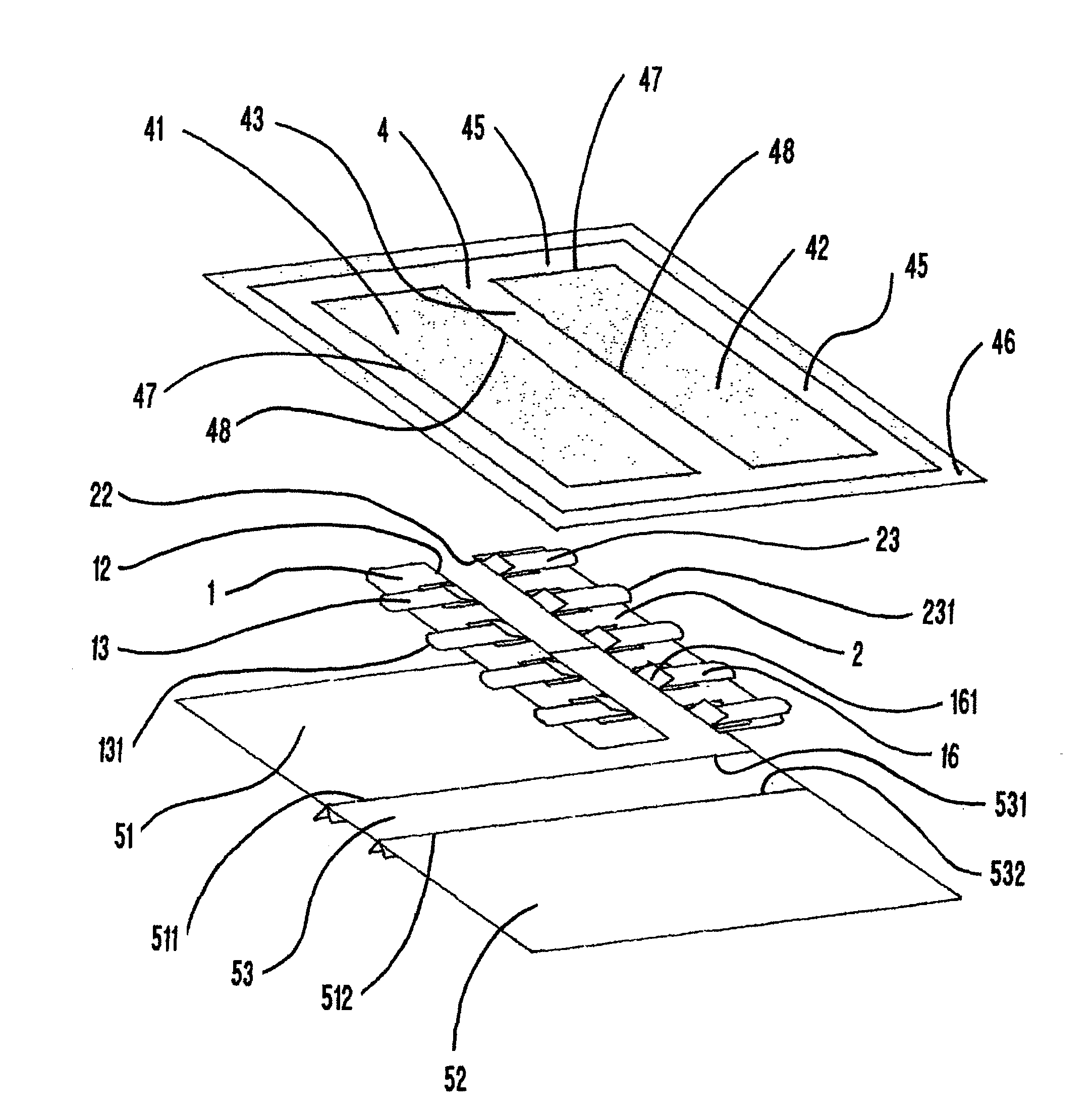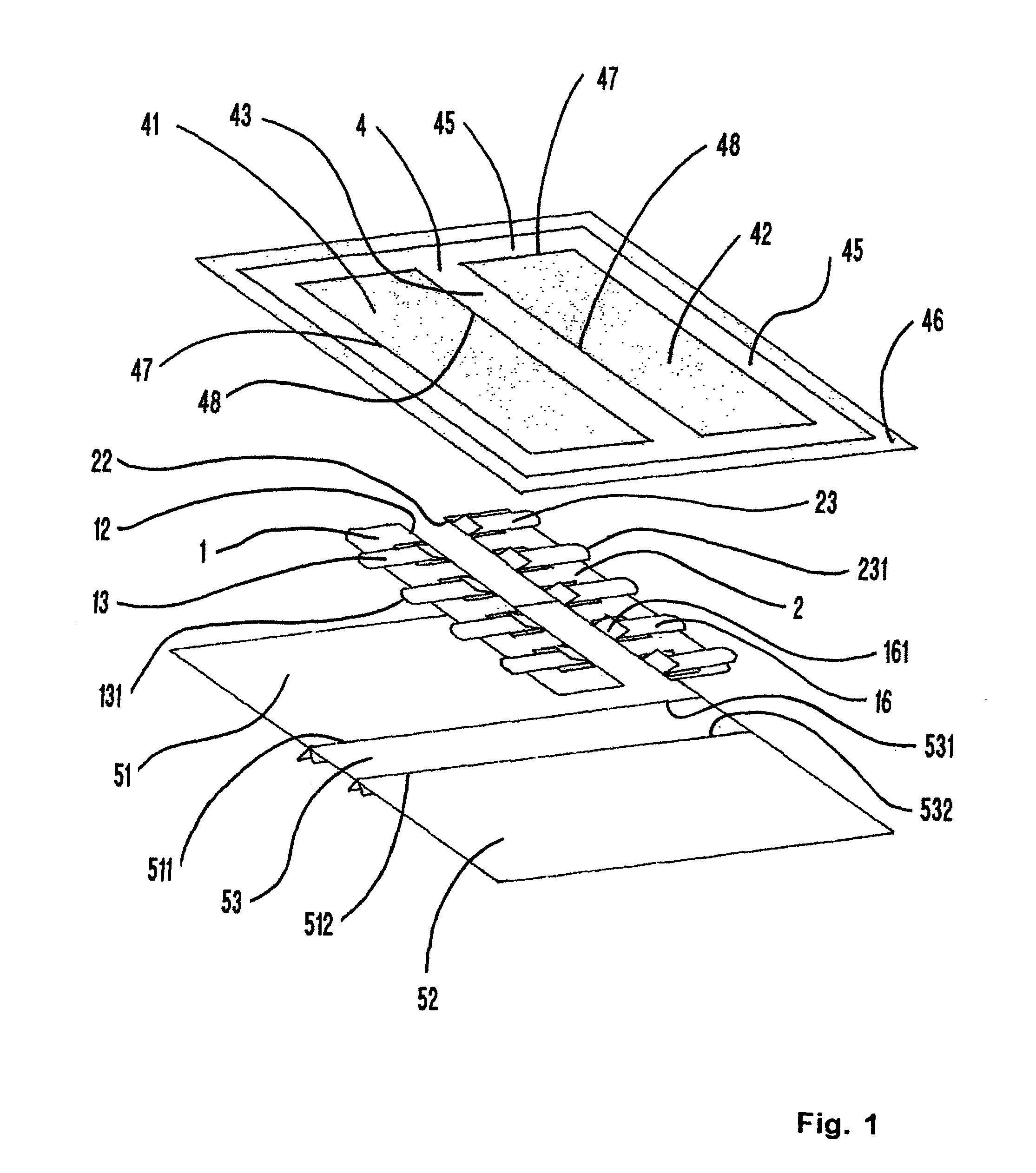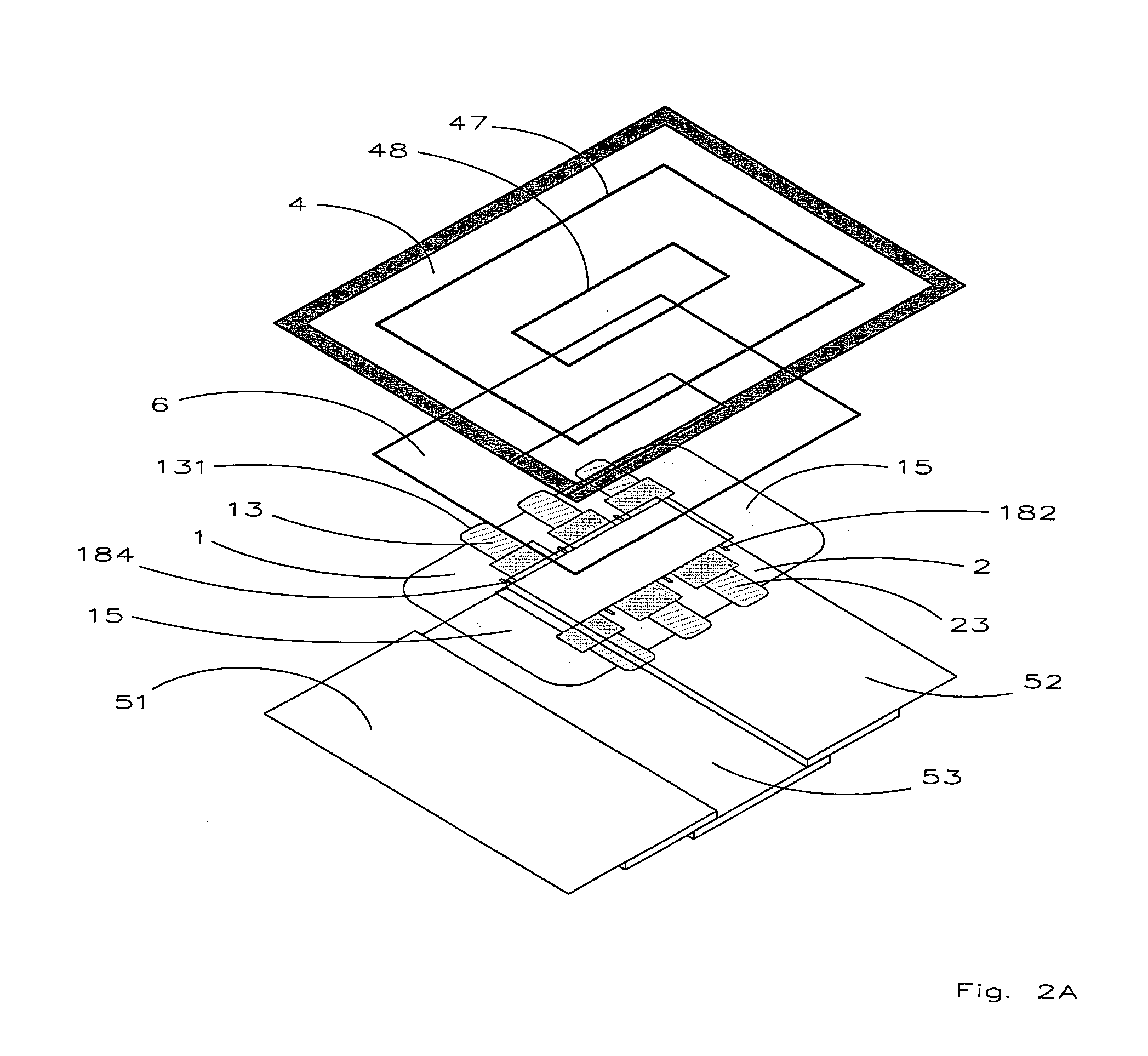Device for adhering to the skin of a patient
a technology for skin adhesion and skin, applied in the field of devices for adhesion to the skin of patients, can solve the problems of high closing force, significant lower closure force between stitches, and skin adhesion of the backing layer, and achieve the effect of convenient closure and high control
- Summary
- Abstract
- Description
- Claims
- Application Information
AI Technical Summary
Benefits of technology
Problems solved by technology
Method used
Image
Examples
Embodiment Construction
[0031]In FIG. 1, a first sheet member 1 and a second sheet member 2 each having a first surface (facing down), and a second surface (facing up) are positioned opposite to one another. The first sheet member 1 has a first opposing edge 12, whereas the second sheet member 2 has a second opposing edge 22. The first and second opposing edges oppose one another, therewith defining a bridge distance there between. The bridge distance is preferably at least 2 cm, leaving about 1 cm of surrounding skin of the wound, more preferably at least 3 cm, leaving about 1.5 cm of surrounding skin of the wound. Preferably, the said bridging distance does not exceed 10 cm, leaving about 5 cm of surrounding skin of the wound, more preferably, the said bridging distance does not exceed 8 cm, leaving about 4 cm of surrounding skin of the wound. In the present case, both first and second opposing edges 12, 22 are straight and run parallel to one another. However, these edges can also be curved, so that the...
PUM
 Login to View More
Login to View More Abstract
Description
Claims
Application Information
 Login to View More
Login to View More - R&D
- Intellectual Property
- Life Sciences
- Materials
- Tech Scout
- Unparalleled Data Quality
- Higher Quality Content
- 60% Fewer Hallucinations
Browse by: Latest US Patents, China's latest patents, Technical Efficacy Thesaurus, Application Domain, Technology Topic, Popular Technical Reports.
© 2025 PatSnap. All rights reserved.Legal|Privacy policy|Modern Slavery Act Transparency Statement|Sitemap|About US| Contact US: help@patsnap.com



